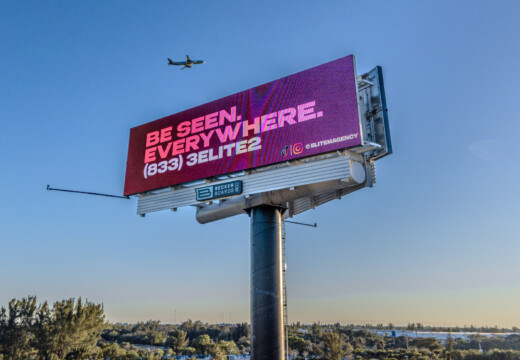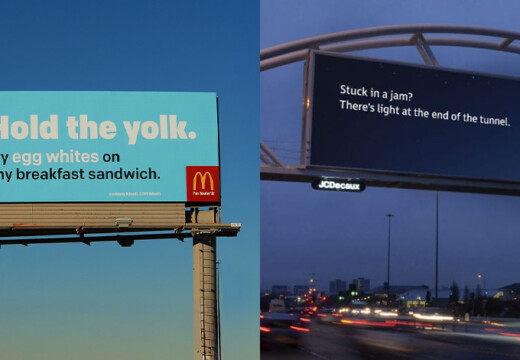Whether you operate a franchise or are a small to mid-sized business owner, developing an audience of well-qualified buyers is a necessity you shouldn’t overlook. This means going beyond just advertising alone and hoping to reach your business goals.
This is to say that solely reaching an audience is not sufficient to meet your marketing and overall revenue goals. In fact, 56% of businesses’ leads aren’t ready to buy yet. As such, 55% of marketers find conversion to be one of the biggest challenges when it comes to generating new leads.
Thus, instead of just advertising to an audience, you ought to focus on developing your audience — those who view and think about your ads — into becoming well-qualified buyers as opposed to quantity leads.
Let’s learn how to develop an audience of quality buyers as you wade through various marketing campaigns.
What are Well-Qualified Buyers?
This term has different meanings across different areas of business, such as mergers and acquisitions and others. When it comes to advertising and marketing, well-qualified buyers are those who possess both the capital to buy from your business, and also have intent to do so.
Therefore, consider well-qualified buyers as those who don’t just have the financial means to afford to be your customers, but those who also want to.
Financial qualifications are just one characteristic of the makeup of these kinds of buyers. The second aspect can be split into two types of buyers:
MQLs and SQLs. Both of these kinds of buyers fit into the second criterion of a well-qualified buyer, as their definitions include interest and intent. Although these two kinds of buyers share traits and are even used interchangeably at times, they have certain differentiations.
Marketing Qualified Leads (MQLs):
This kind of lead entails a buyer who is interested in your business or its products and services. However, they may not be fully convinced to buy from you just yet. MQLs are individuals from businesses that have engaged with your marketing efforts and could become paying customers with the right messaging and nurture programs. As such, an MQL is a buyer closer to the top of the sales funnel.
Sales Qualified Leads (SQLs):
These leads represent buyers who are interested in your company and solutions and have the intent to buy. SQLs typically are contacts or accounts that have buying intent that consider your business as the one to go to for purchases. SQLs may have previously engaged with your brand more than just once and have shown interest in lower sales funnel content like pricing pages, case studies and product comparison content.
The key difference between an MQL and an SQL is buying intent, denoting the need to create different forms of outreach, ads, and other messaging to nurture them.
Why You Shouldn’t Simply Advertise and Hope
A well-tailored advertising strategy that yields results is multi-faceted and doesn’t depend on…well, simply advertising alone. There’s so much more to a successful campaign than just reaching high quantities of people, even if they’re your target audience.
As explained earlier, there are two types of qualified buyers, so you should focus on catering to them individually. What works for an MQL won’t suit an SQL, who is already equipped with the knowledge they need to make a buying decision.
And these are just the divisions of your well-qualified buyers. Ideally, a strong marketing plan includes developing all potential buyers.
Did you know that 48% of those who sell in a business say they struggle with communicating value?
Additionally, consider that 90% of business executives think customers highly trust their companies while only 30% of consumers actually do. These kinds of disconnects prove the need to better engage with the different members of your target market in order to nurture them into the well-qualified buyers your business needs,
How to Develop Your Audience Into Well-Qualified Buyers
To develop an audience of qualified buyers, as well as create well-qualified buyers from your target market, you’ll need to focus on various efforts that allow you to build meaningful relationships with your customer base. In these relationships, you’ll need to address the specific needs of your target market as well as prove that you provide value for those needs. The following guides you in the process of developing your audience:
- Understand your audience:
You won’t build any fruitful relationship with your target market and convert it into a group of qualified buyers without understanding it thoroughly. To do so, you’ll need to conduct market research to fully understand your audience’s demographics, locations, behaviors, needs and pain points.
Your research should enable you to form detailed buyer personas so that you can properly plan and create your marketing campaigns. These marketing campaigns must ensure you’re addressing the unique needs of your customers.
- Create valuable content:
Before you advertise, begin with creating a content plan to crank out high-quality content that educates, entertains, or solves problems for your audience. Make sure to tailor your content to specific customer personas, as well as to the different kinds of qualified buyers.
For instance, MQLs will require top-of-the-funnel content, while SQLs are already educated on your offerings and will need bottom-of-the-funnel content.
- Use marketing automation:
Apply marketing automation tools to engage MQLs through personalized email campaigns, drip sequences, and targeted content delivery.
Use automation to track and analyze lead interactions and behaviors, allowing you to identify when leads transition from MQLs to SQLs.
- Create sales and marketing alignment:
Encourage collaboration and communication between your sales and marketing teams to ensure alignment on definitions, qualification criteria, and handoffs.
Form clear criteria for transitioning leads from MQLs to SQLs and define the responsibilities of each team at each stage of the buyer’s journey.
- Engage your buyers authentically:
You should actively engage your buyers to build a steady relationship with them – the kind that pushes them to convert. There are many ways to do this, like actively engaging with them on social media, forums like Reddit, emails and other relevant platforms.
Engaging with your audience involves responding to their concern, inquiries and comments promptly. Make sure to do this, as this is something many brands overlook. Remember, communication is a two-way street. This will keep them informed and feel that their needs and specific concerns are being addressed.
- Provide exceptional value:
You should regularly engage your audience by showing what your business brings to the table. To do so, create valuable resources such as videos, webinars, guides and tutorials to satisfy the curiosity of your customers and place your expertise front and center. Be sure to create this kind of content considering both the needs of both MQLs and SQLs.
Aside from communicating your expertise and value, remember to focus on the specific pain points and objectives of your buyers, aside from solely promoting your products or services. Make it about them rather than just you.
- Offer Personalized Experiences:
No one likes being marketed to. It can be boring and generic if not formulated carefully. Tailor your marketing and ad messages to the unique preferences and behaviors of your individual buyers. This is where buyer personas come in handy.
Use data-driven insights to segment your audience and deliver personalized recommendations and promotions that resonate with each persona and type of qualified buyer.
- Build trust and credibility:
This is a long-term goal that involves establishing your brand as a trustworthy authority in your industry. You can achieve this by consistently delivering on your promises and providing great customer experiences.
Again, this is where marketing collateral comes into play. Showcase your credibility and the trust your customers place in your brand with customer testimonials, case studies, and reviews. These assets demonstrate social proof and inspire confidence in your brand.
- Facilitate two-way communication:
Don’t just send ads and other marketing collateral your customers’ way. Instead, encourage feedback and dialogue with your audience to understand their needs and preferences.
Actively listen to and respond promptly and accordingly to your customer feedback. You should also use this feedback when creating and innovating your products and services, as well as in your marketing messaging and ads.
- Measure and iterate:
Track and analyze your key performance metrics, such as engagement rates, conversion rates, and customer lifetime value. You should also pay attention to the more micro forms of ROI that are relevant to each campaign. This involves getting insights on your advertising campaign on how your ads are performing.
Making the Most of Advertisements
Aside from the steps explained above, you should never forgo advertising as it can fuel brand recall, brand equity and the desire to choose your brand from others. It can engage both MQLs and SQLs, as well as help retain these well-qualified buyers.
By focusing on building genuine connections, providing value, and addressing the specific needs of your target market, you can develop an audience of qualified buyers who are more likely to engage with your brand and make purchasing decisions based on trust and credibility.
You should also choose a strong ad platform when advertising to your audience. The Blip Billboards digital ad platform is there with you every step of your ad campaign. It empowers you to set up your entire campaign, including choosing the location of your billboards, betting on your blips (8-15 second ad slots), scheduling your ads, creating them, updating and getting key campaign analytics.


